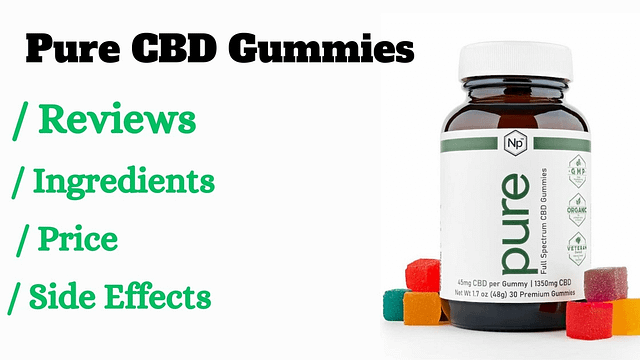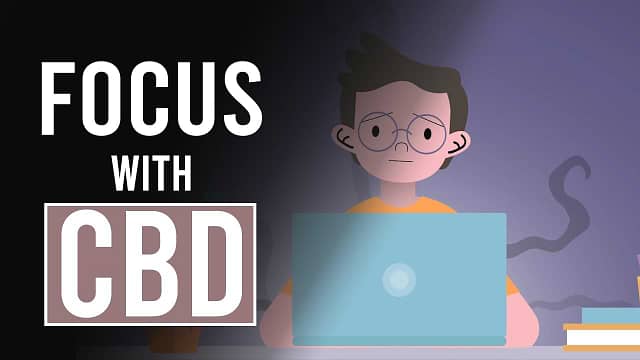In recent years, CBD oil has emerged as a promising natural remedy for individuals seeking relief from chronic pain. With its potential to interact with the endocannabinoid system, CBD oil has garnered attention for its analgesic properties. This step-by-step guide aims to provide you with a comprehensive understanding of how to use CBD oil for pain to effectively manage chronic pain.
Table of Contents
- 1 What is CBD Oil and How to Use CBD oil For Pain
- 2 Choosing the Right CBD Oil Product
- 3 Product Types
- 4 CBD Concentration
- 5 Third-Party Testing
- 6 Ingredients
- 7 Flavor and Taste
- 8 Determining the Optimal Dosage
- 9 Administration Methods: Using CBD Oil Safely
- 10 Sublingual Application (Tinctures)
- 11 Topical Application
- 12 Oral Ingestion (Gummies)
- 13 Creating a Personalized CBD Routine
- 14 Monitoring and Adjusting for Long-Term Relief
- 15 Lifestyle Factors to Enhance CBD's Effects
- 16 Exercise Regularly
- 17 Stress Management
- 18 Balanced Diet
- 19 Conclusion
- 20 Frequently Asked Questions
- 21 Is CBD oil legal?
- 22 Will CBD oil make me feel high?
- 23 How long does it take for CBD oil to work?
- 24 Can I overdose on CBD oil?
- 25 Are there any side effects of using CBD oil?
- 26 Can I take CBD oil with my medications?
- 27 Can I drive or operate machinery after using CBD oil?
- 28 Is there a risk of addiction with CBD oil?
- 29 Can I use CBD oil during pregnancy or breastfeeding?
- 30 How do I store CBD oil?
What is CBD Oil and How to Use CBD oil For Pain

CBD, short for cannabidiol, is a compound derived from the hemp plant. Unlike its counterpart, THC, CBD does not induce psychoactive effects. Instead, it interacts with the endocannabinoid system (ECS), a complex network of receptors throughout the body that helps regulate various functions, including pain perception. By influencing the ECS, CBD oil holds promise in alleviating chronic pain.
Choosing the Right CBD Oil Product
When considering CBD oil for chronic pain relief, it's essential to choose the right product. Here are some key factors to consider:
Product Types
CBD oil is available in various forms, including:
- Tinctures: Liquid extracts that can be taken sublingually (under the tongue).
- Capsules: Pre-measured CBD doses in convenient pill form.
- Topicals: Creams, balms, or lotions infused with CBD for targeted application.
- Gummies: Edible CBD-infused gummies that offer a tasty and discreet option.
CBD Concentration
Read product labels carefully to understand the CBD concentration per serving. Choose a product with a concentration that aligns with your intended dosage.
Third-Party Testing
Opt for products that undergo third-party testing for purity and potency. This ensures that the product contains the advertised amount of CBD and is free from contaminants.
Ingredients
Review the list of ingredients to ensure the product meets your dietary preferences and restrictions.
Flavor and Taste
Consider the flavor options available, especially if you're sensitive to the natural taste of CBD.
By considering these factors, you can make an informed decision when selecting a CBD oil product that suits your preferences and needs.
Determining the Optimal Dosage
Finding the right dosage is crucial for achieving effective pain relief without adverse effects. The “start low and go slow” approach is recommended. A general guideline for beginners is to start with a low dose, such as 10-20 mg of CBD per day, and gradually increase until you find the optimal dosage that provides relief. Keep in mind that individual responses may vary.
Curious About CBD: What Does It Feel Like? Exploring the Sensations
Administration Methods: Using CBD Oil Safely
CBD oil can be administered through various methods:
Sublingual Application (Tinctures)
- Use the dropper to place the desired amount of CBD oil under your tongue.
- Hold the oil under your tongue for 30-60 seconds before swallowing.
- This method allows for faster absorption through the sublingual blood vessels.
Topical Application
- Apply a small amount of CBD-infused topical cream or oil to the affected area.
- Gently massage the product into your skin.
- This method is effective for localized pain relief and does not enter the bloodstream.
Oral Ingestion (Gummies)
- Follow the recommended dosage on the product label. In your case, take 2 gummies during the day and 2 gummies before sleep.
- Chew the gummies thoroughly before swallowing.
- Ingesting CBD orally provides longer-lasting effects and is easy to incorporate into your routine.
Creating a Personalized CBD Routine

Consistency is key when using CBD oil for chronic pain relief. Consider maintaining a pain journal to track your CBD usage, pain levels, and any improvements over time. Start with your initial dosage and monitor how your body responds. If you don't experience the desired relief, gradually increase your dosage while closely observing any changes.
Monitoring and Adjusting for Long-Term Relief
CBD oil takes some time to build up in your system and provide consistent pain relief. Be patient and allow a few weeks for the effects to fully manifest.
Lifestyle Factors to Enhance CBD's Effects
To maximize the benefits of CBD oil for chronic pain, consider adopting complementary lifestyle changes:
Exercise Regularly
Engage in low-impact exercises, such as walking, swimming, or yoga, to promote overall well-being and help manage pain.
Stress Management
Practice relaxation techniques, such as deep breathing, meditation, or mindfulness, to reduce stress, which can exacerbate chronic pain.
Balanced Diet
Consume a nutritious diet rich in fruits, vegetables, whole grains, and lean proteins to support your body's natural healing processes.
Conclusion
Using CBD oil to relieve chronic pain requires a systematic approach. By understanding the basics of CBD, selecting the right product is very important. Remember that results may vary, and patience is essential when integrating CBD oil into your pain management strategy. By combining CBD oil with a healthy lifestyle, you can embark on a journey toward holistic well-being and improved quality of life.
Frequently Asked Questions
Is CBD oil legal?
CBD oil derived from hemp with less than 0.3% THC is legal in many parts of the world. However, it's essential to check your local laws and regulations before purchasing or using CBD products.
Will CBD oil make me feel high?
No, CBD oil does not produce the “high” associated with THC. It is non-intoxicating and does not alter your state of mind.
How long does it take for CBD oil to work?
The onset of CBD's effects varies depending on the administration method. Sublingual application and inhalation yield faster results, while oral ingestion and topicals take longer.
Can I overdose on CBD oil?
CBD is generally well-tolerated, and overdose is unlikely.
Are there any side effects of using CBD oil?
Side effects are rare and typically mild, including drowsiness, dry mouth, and changes in appetite. Consult your doctor if you experience any adverse reactions.
Can I take CBD oil with my medications?
Yes, As it is safe so it can be taken with other medications.
Can I drive or operate machinery after using CBD oil?
While CBD is non-intoxicating, it's advisable to assess how CBD affects you before driving or operating heavy machinery.
Is there a risk of addiction with CBD oil?
CBD is not addictive and does not lead to dependency. It is considered safe for long-term use.
Can I use CBD oil during pregnancy or breastfeeding?
The safety of using CBD oil during pregnancy or breastfeeding is not well-established.
How do I store CBD oil?
Store CBD oil in a cool, dark place away from direct sunlight and heat to maintain its potency. Always follow the storage instructions on the product label.

Fact Checker
Kevin S. Ford, our meticulous fact checker, ensures that the information presented on BestCBDGummiesFor.com is accurate and trustworthy. With a background in journalism and a degree from Emerson College, Kevin is skilled in verifying data from reliable sources, delivering content that readers can confidently rely on.











+ There are no comments
Add yours